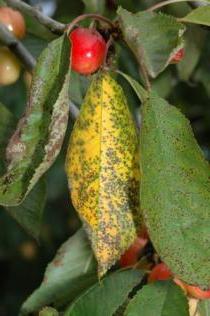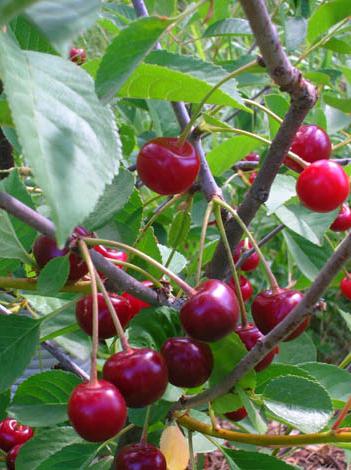Among the many diseases of stone fruits, one of the most dangerous is cherry coccomycosis. Cherry, blackthorn, cherry plum, plum, which grow near an infected tree, also suffer from this disease. Only felt cherry is resistant to this fungal disease . Even before 1962, this fungus (Coccomyces hiemlis Higg) was a rarity in the USSR. To date, cherry coccomycosis in the CIS countries is ubiquitous.

Coccomycosis affects leaves, stalks, petioles, green fruits. With the rapid development of this disease, premature leaf fall is noted. Annual early leaf fall of cherries leads to a significant weakening of trees, because even at uncritical temperatures they suffer from frost. Scientists have found that the pathogen successfully hibernates on fallen leaves. They form the apothecia of the fungus (fruiting bodies), ripening in April - early May. When warm weather sets in, accompanying the initial flowering period of cherries, ripened bagspores are expelled, which carry out primary infection of the trees. Mass ejection of these spores occurs in the 1-2 days of May. Its duration and duration are affected by weather conditions.
The first manifestations of the disease become noticeable in the 1-2 decade of June. Small, reddish spots appear on the leaves, gradually increasing in size. On the lower side of the leaf blade in the area of spots, a whitish coating appears, which consists of conidiospores of the fungus. With their help, he settles around throughout the summer. Cherry coccomycosis has a characteristic symptom: premature drying of the fruit on the branches in mid-summer.
What to do when this disease appears? The fight against coccomycosis should be carried out on "all fronts." In early spring, nitrafen should be sprayed. For this procedure, use a 60% paste in an amount of 40-50 kg / ha. The collection and destruction of infected fallen leaves must be carried out throughout the vegetative period. It’s best to burn them. In extreme cases, they need to be buried to a depth of 15 cm. Trees treatment with 90%
copper chloride (4-7 kg / ha), 80% Tsineb (4-7 kg / ha), 50% " Kaptan "(5-7 kg / ha), 50%" Phthalan "(5-7 kg / ha) is produced during the fall of the petals and when the leaves open. Repeat the procedure after another 15 days. The last treatment with the listed preparations is carried out after harvesting. Among the drugs successfully used for the destruction of coccomycosis, biofungicides should be noted: Fitosporin, Penconazole, Difenoconazole, Thiofan-methyl.

Cherry coccomycosis is most actively spread on weakened trees. Its distribution is promoted by increased humidity and rainy weather. Varieties of cherries resistant to coccomycosis were bred: Seyanets-1, Ballad, Victoria, Bystrinka, Novodvorskaya, Volochaevka, Kent, Dessert, Zarya Tatariya, Morozovka, In memory of Vavilov, Novella, Rovesnitsa, Shokoladnitsa, Kharitonovskaya. Measures for the prevention of coccomycosis - order and cleanliness in the garden, planting trees in sunny places, regular treatments with special preparations, removal of heavily weakened trees.